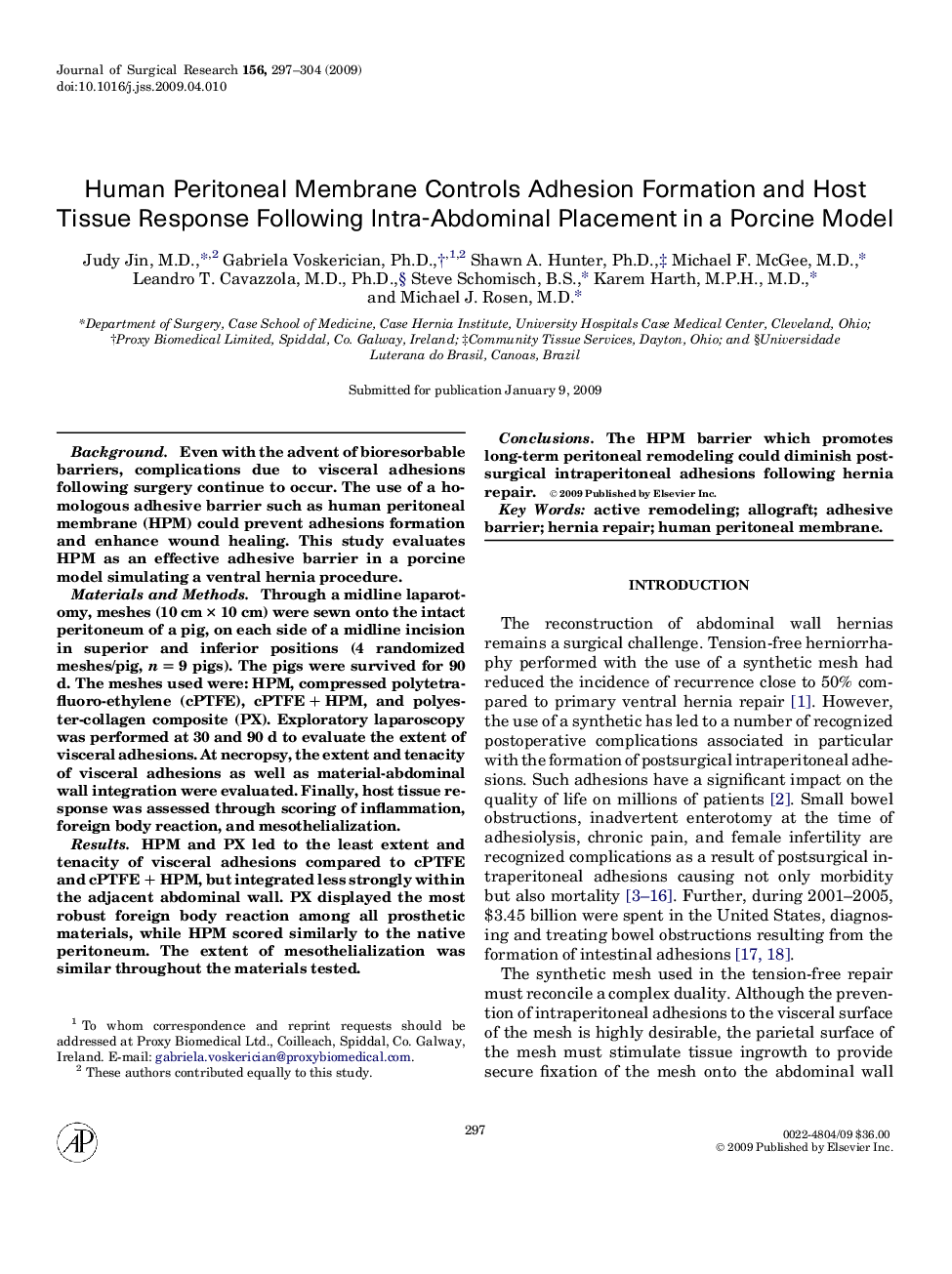| Article ID | Journal | Published Year | Pages | File Type |
|---|---|---|---|---|
| 4303264 | Journal of Surgical Research | 2009 | 8 Pages |
BackgroundEven with the advent of bioresorbable barriers, complications due to visceral adhesions following surgery continue to occur. The use of a homologous adhesive barrier such as human peritoneal membrane (HPM) could prevent adhesions formation and enhance wound healing. This study evaluates HPM as an effective adhesive barrier in a porcine model simulating a ventral hernia procedure.Materials and MethodsThrough a midline laparotomy, meshes (10 cm × 10 cm) were sewn onto the intact peritoneum of a pig, on each side of a midline incision in superior and inferior positions (4 randomized meshes/pig, n = 9 pigs). The pigs were survived for 90 d. The meshes used were: HPM, compressed polytetrafluoro-ethylene (cPTFE), cPTFE + HPM, and polyester-collagen composite (PX). Exploratory laparoscopy was performed at 30 and 90 d to evaluate the extent of visceral adhesions. At necropsy, the extent and tenacity of visceral adhesions as well as material-abdominal wall integration were evaluated. Finally, host tissue response was assessed through scoring of inflammation, foreign body reaction, and mesothelialization.ResultsHPM and PX led to the least extent and tenacity of visceral adhesions compared to cPTFE and cPTFE + HPM, but integrated less strongly within the adjacent abdominal wall. PX displayed the most robust foreign body reaction among all prosthetic materials, while HPM scored similarly to the native peritoneum. The extent of mesothelialization was similar throughout the materials tested.ConclusionsThe HPM barrier which promotes long-term peritoneal remodeling could diminish postsurgical intraperitoneal adhesions following hernia repair.
